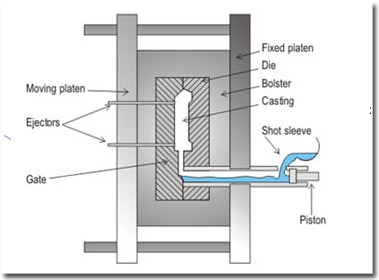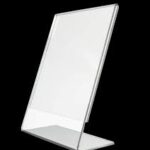One form of manufacturing process used in mass production of metal components in high accuracy and fine surface finishing is pressure die casting. Renowned for its speed, effectiveness and intricate detailing on shapes, pressure die casting finds its applications among industries such as automotive, aerospace, electronics and consumer goods. IN this article, the pressure die casting method will be discussed along with its advantages, applications and its place in modern manufacturing history.
To know more about Pressure Die Casting- https://www.indianmetal.solutions/pressure-die-casting/
What are the Features of Pressure Die Casting?
Pressure die casting is a process whereby liquefied metal is systemically compressed and injected into the cavity of a die or mold. Manufactured from high grade steel, the mold is made in two parts which are held together with bolts during the process of casting. The molten metal being poured in cape of the die is an almost solid hence when cooled quicker than the molding dies the molded part can be released, or unharmed by the clutch around the part. This method enables companies to manufacture parts with complex features and precise dimensions.
This is a great method as it ensures that all surfaces of the mold are well covered with the metal. Because of the pressure that meets the above advantage, then a good looking and straight piece can be made to emerge from the molding.
The Pressure Die Casting Process
Preparation of the Die: To begin, the die is cleaned, prepped with a lubricating agent, and raised to designated temperature. The sequential steps of die preparation totally affect how efficiently the liquid metal is poured into the cavity and how readily the component comes out after solidification.
Injection of Molten Metal: In this process, the metal which is usually an alloy of aluminum, and magnesium or more often zinc is heated above its melting point and injected into the cavity under a high pressure by means of a hydraulic or pneumatic piston. This pressure may reach anywhere between 1,500 and 25,000 psi depending on the intricacy of the part to be molded as well as the type of metal being utilized.
Solidification: As soon as the melt metal is fed into the mold cavity, it cools and solidifies in a very short period of time. During cooling, when it is critical to hold down on the metal, pressure is applied in order to prevent the melt metal from contraction and subsequent gas cavities.
Ejection of the Part: Once complete solidification of metal has occurred; the die is removed and the component is removed from the mold with the help of ejector pins. Then the part is subjected to final processes such as trimming, removing, and finishing.
Recycling of Scrap: Most of the extra metal parts like runners and gates that are cut off are cut off and then remelted to be cast in later cycles of pressure die casting which makes pressure die casting rather sustainable and economical.
Every type of pressure die casting can be further classified into hot chamber pressure die casting and cold chamber pressure die casting both of which can be applied to specific metals.
Hot Chamber Die Casting: In this process the molten metal is kept in the reservoir which is part of the casting machine. It is pushed by a plunger into a die which has a cavity of the desired shape. This is one of the advanced technology that allows thin walled die casting and is used for zinc, magnesium and lead but in very low melting points.
Cold Chamber Die Casting: With regard to Insitus die, in cold chamber casting the metal is brought to the flow channel only before the cavity is filled with the material. This works better with metals that have a high melting point like aluminum and copper plus brass. Though it is slower in this respect than hot chamber casting, it is quite suitable for dense parts that need higher mechanical strength.
Advantages of Pressure Die Casting
High Precision and Accuracy: With precision die casting, parts are produced more accurately and within very close tolerances due to the ability to hold rigid die configurations and this extends to parts manufactured with high accuracy.
Complex Geometries: The process allows the creation of various forms which would be very difficult or even impossible using the alternative manufacturing processes. It becomes easy to create thin walls, complicated features, and sharp edges.
Fast Production Cycle: Due to the speed of production of pressure die casting, the method is particularly useful in large scale production. Once the dies have been made, the actual production of the parts is quick and repeatable hence lead times are cut down.
Excellent Surface Finish: The surfaces of some components made by die casting are awalys stainless and mostly shiny with only very light processing. This results in less disastrous cleaning or finishing activity.
Material Efficiency: Since the residual metal is most of the time reused, the procedure is very resource efficient. This has led to less trash being generated in die-casting and is more efficient.
Economically Priced for Largest Quantities: The responsibility for die casting processes may sometimes be expensive, however, the piece rate cuts down with larger quantity production and hence suffices for mass production.
Where Pressure Die Casting is Used
Pressure die casting is used in many fields including:
Automotive Industry: Vehicles use die cast parts like engine blocks, transmission case and structural components that are made from die cast because of their high strength, durability and low weight.
Aerospace Industry: Houses, brackets, and other loading connectors and housings and other intricate details are fabricated for use in Aerospace Applications.
Electronics: Manufacturing die-cast clothes enclosures, heat sinks and other geo-political components having high thermal conductivity and complex geometry.
Consumer Goods: Most of the household products, kitchenware, garden tools, hardware, etc. are made by means of die casting process to assist mechanical and dimensional accuracy of the device.
Industrial Machinery: Pressure die casting is widely used in the production of heavy-duty equipment, comprising high-performance elements comprising pumping equipment, valves, and hydraulic apparatus.
Challenges of Pressure Diecasting
However, pressures in diecasting have inherent benefits, certain challenges also exist:
High Initial Tooling Costs: The mold or die fabrication cost may incur a high capital, an aspect that is likely to deter small-scale production or even prototype making.
Material Limitations: Pressure die casting is not suitable for all metals and alloys. For example, steel is a high-melting point metal but is impossible to perform this process.
Porosity: Void holes or air bubbles on the cast part may be a result of trapped gas or poor cooling within the cast part which leads to weakening of the part.
This post was created with our nice and easy submission form. Create your post!





